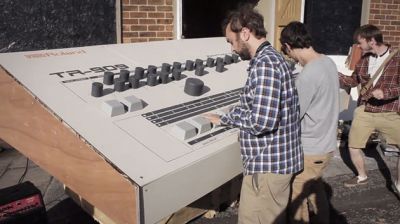
 An Ode To the 909
An Ode To the 909
House | Monday 17th November 2014 | Daniel
It’s been thirty years exactly since Roland graced the world with its seminal drum machine. The Roland TR-909 Rhythm Composer was released in 1984 and was the brainchild of Tadao Kikumoto. It was released three years after Roland’s first seminal drum machine the TR 808, if the 808 is considered the rhythmic godfather of hip-hop then the same can be said of the 909 to house and techno.
The 909 has gone on to become the foundation of dance music in its 30 years of existence. Top of the list of house music's defining sounds is the four-to-the floor kick drum cutting through the mix and that distinctive open high-hat you can expect to hear on pretty much every Mark Kinchen remix. The characteristic claps and rim shots are all generated by the 909 or at least inspired by it.
Another feature the 909 possessed was the ability to “accent” recorded notes, this gave producers the opportunity to give their drum patterns a more human feel to them and create richer textures to their grooves by being able to edit the volume of certain notes.
With the release of Roland’s new baby the TR-707 in 1984 many people thought that the 909 would be consigned to history. As RAM became more affordable it lead to the possibility for higher quality audio samples to be stored inside the 707. This in fact led to the 909 dropping in price dramatically thus becoming affordable for many ‘bedroom’ producers. This factor and the explosion of House and Techno music in the mid to late eighties ensured the 909 would continue to be the bedrock of dance music for years to come.
Apart from its newfound affordability the 909 had one other very important characteristic: That! kick drum sound, it had plenty of bass but also a very powerful attack/thump that could really push club P.A. systems and allow revellers to really feel the beat inside them. The fact that the kick and the clap was so big in sound and that the hats and cymbals had a really crisp distinctive sound along with some other useful features such as a flam feature and also the shuffle feature meant it was the perfect tool for House producers.

Artist’s made a giant TR 909 to celebrate the 30th annerversey of it's release.
It’s quite funny to think that Roland TR-909 became the icon it is today almost by accident, the fact that it happened to become so affordable just as a new musical movement was taking place. These days of course they are far more sort after and still change hands for thousands of pounds despite being thirty years old and a plethora of software recreations are available on the market. I put it down to Roland’s decision to use analogue technology, against the trends of the era. Though it didn’t provide a realistic sound it was incredibly unique sounding, expressive musical tool that has become the benchmark in House Music production.
